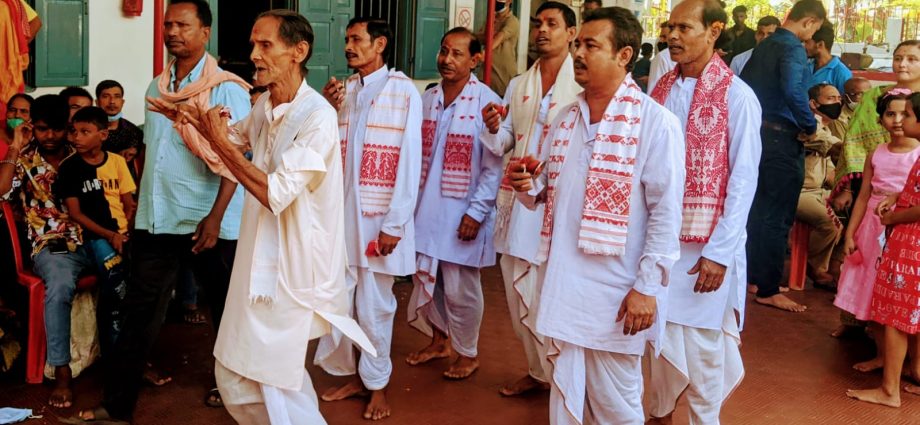The state of Assam is very rich in traditions and culture. It has several music and dance forms, unique to different regions of the state. Popular examples include Bihu dance and Sattriya dance. While the lesser known ones include Jhumur, Bagurumba, Ojapali, Bhor Tal and some forms of Naam.
Ojapali is a traditional art form from Assam. It involves storytelling with the use of music and simple body movements. The main narrator or leader of the group is called the Oja and he often wears a different costume. And there are multiple assistants called the pali. In bigger teams of performers, there can be more than one Ojas. They may perform together as a single unit or one after another. This way each one of them narrates a part of the story and the next one continues from where the previous one left off. The Pali perform the chorus of the act. A small version of the handheld taal is an essential component of this performance.
There are two distinct types of Ojapali performances and the difference is in the stories being told. While the first one known as Biygoa or Byas tells stories from the Mahabharata or Ramayan. And thus following the Vaishnavism part of Hinduism. This is often performed on Janmahstami and similar festivals in Naamghars and temples. The second type is called the Sukannani and tells stories pertaining to Shaktism part of Hinduism. And the artists perform this form during the days of Manasa Puja and Durga Puja.

